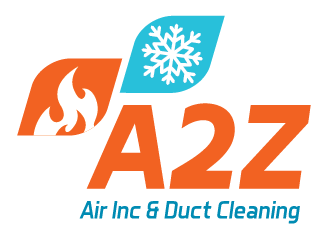
Once the weather begins to cool off, you might be wondering about how you’ll prepare your heating and cooling. After all, HVAC expenses can contribute a significant chunk of your monthly electric bill. To figure out new ways to reduce costs, some people look closer at their thermostat. Maybe there’s a setting they should use to improve efficiency?
The majority of thermostats include both a ‘Fan’ or ‘Fan On’ setting. But if the fan is going during a typical cycle, what can the fan setting offer for an HVAC system? This guide can help. We’ll share precisely what the fan setting is and when you can use it to save money during the summer or winter.
My Thermostat Has a Fan Setting?
For the bulk of thermostats, the fan setting indicates that the HVAC blower fan stays on. Some furnaces may continue to generate heat at a low level with this setting, but for the most part heating or cooling isn’t being made. The ‘Auto’ setting, conversely, will start the fan during a heating or cooling cycle and shut it off after the cycle is finished.
There are benefits and drawbacks to using the fan setting on your thermostat, and whether you do or don’t {will|can|should]] depend on your personal comfort preferences.
Advantages to utilizing the Fan/On setting:
- You can keep the temperature in each room more balanced by enabling the fan to keep circulating air.
- Indoor air quality can increase since constant airflow will keep passing airborne particles through the air filter.
- A smaller amount of start-stop cycles for the HVAC fan helps expand its life span. Because the air handler is usually part of the furnace, this means you can minimize the risk of needing furnace repair.
Downsides to switching to the Fan/On setting:
- A continuous fan could raise your energy costs by a small margin.
- Nonstop airflow can clog your air filter in a shorter amount of time, increasing the frequency you’ll need to replace it.
{Choosing Between|Should My Thermostat Be on|Which Setting for My Thermostat? Fan or Auto in Each Season
During the summer, warm air may persist in unfinished spaces like the attic or an attached garage. If you use the fan setting, your HVAC system might gradually move this warm air into the rest of your home, compelling the HVAC system to work more to maintain the preferred temperature. In serious heat, this may lead to needing AC repair more regularly as wear and tear gets worse.
The opposite can occur during the winter. Cooler spaces such as a basement will hold onto cooler air, which will eventually make its way into the rest of your home. Leaving the fan setting on will sometimes pull more cold air upward, increasing the amount of heating you need to keep warm.
If you’re still trying to determine if you should use the fan/on setting, don’t forget that every home and family’s comfort needs will vary. Leaving the HVAC system’s fan on could work for you if:
Someone in your household deals with allergies. Allergies and similar respiratory conditions can be tough on the family. Leaving the fan on is more likely to increase indoor air quality, helping your family breathe easier.
Your home experiences hot and cold spots. All kinds of homes wrestle with difficult hot and cold spots that quickly evolve to a temperature different from the rest of the house. The fan setting should help lessen these changes by constantly refreshing each room’s supply of air.



